3 April, 2002
Nestled 3 miles above the Arctic Circle lies the
native village of Selawik. The village sits
surrounded by rivers and lakes which now remains
frozen but in the summer is running with water and
brings life. Fish is plentiful here and students tell
stories of large sheefish that are caught during
the summer and winter. During the winter, holes
are dug through the ice to catch the fish. There
are tales of 90 sheefish caught in a single day.
The sizes vary but can be big enough for an
entire man's arm to fit inside of the fish.
Fishing; an ancient pastime of the native's
sustenance living. A pastime that many natives
still rely heavily upon.
Selawik is a large native village of
approximately 1000 people. The school is a state-
of-the-art school and serves 270 children grades
K-12. The school day changed for the students
today as we rolled in on our snowmachines. Since
the village is small, our arrival is quite a
show. We appear as the traveling circus with all
of our machines and sleds. The whole village
gapes at us with awe and curiosity. Our goal was
to teach the students at Selawik school about
snow and cold science. We accomplished this today
by speaking to several grade levels about their
world of snow. Mark Proch's High School Earth
Science class has been collecting our weather data
over the last several months. We are very grateful
for their diligent work in recording the data.
They turned over their data book to us and it will be
used to help us understand the weather patterns in the
Arctic. School is still school above the Arctic
circle.
The subjects that are taught at Selawik school are
the same subjects that any American school would
teach. However, the cold brings a different life
for the students.
The water and septic systems in the remote
villages have to be cleverly designed.
Permafrost, which is frozen ground, lies beneath
the tundra. In order to get fresh water to the
houses and school, the pipes must be placed above
the ground. The pipes are out of a metal
material called Bond Strand. Inside of this pipe
is sprayed foam that surrounds the plastic pipe
that has heat tape around it. If the temperature
drops below a certain point, the heat tape will
kick on and begin insulating the pipes. This is
the only way to ensure that the water is not
frozen. The same system is used for the sewage
system. This water system required much
engineering ingenuity to be developed and applied.
It's quite amazing and is a constant reminder
that even in a nice, luxurious school, that life
is difficult in the Arctic.
Travel by snowmachines is the common form of winter
transportation. It is also dangerous and must be
practiced with caution. There is a trail from
Buckland to Selawik that is often traveled.
However, weather conditions can change
dramatically and instaneously. The trail is
marked with tripod markers that have reflective
tape on them. The reflective tape is placed on
them in case of a white-out from a blizzard or
ice fog such as we experienced on our trip into
Selawik. People also travel during the night on the
trail so the reflective tape illuminates the way.
SO WHERE IS MRS. CHEUVRONT??? LET'S PLOT!!!!
In Selawik!!!!
Latitude: 66.60473 degrees North
Longitude: 160.01095 degrees West
After our great visit with the school children, we
are nestled snugly at the school. Once again, we
have been supplied with clean showers and a warm
place to sleep.
Temp max: -10 degrees Celsius
Temp min: -18 degrees Celsius
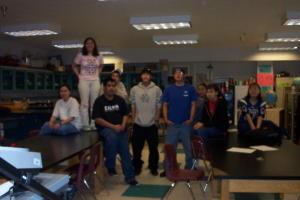
Mark Proch's Earth Science: These students have been recording weather data for the past several months. Great job on data collection!!!!

Matthew working outside with middle school students from Selawik school,
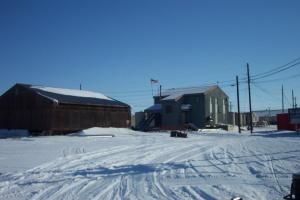
The Postoffice at Selawik.
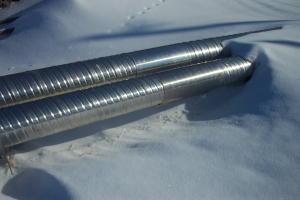
The water and sewage pipes in Selawik.
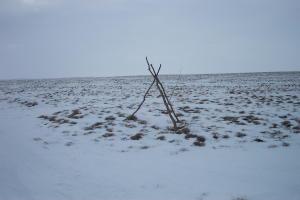
The trail from Buckland to Selawik is marked with wooden tripod markers with reflective tape.
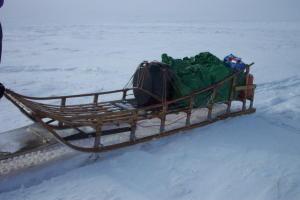
Traditional sleds are used by the natives to pull supplies behind snowmachines. The sleds are made by the natives.

This sheefish was caught in the river by this young man! This picture was taken for my husband Steve! There are alot of big fish in Alaska!
Contact the TEA in the field at
.
If you cannot connect through your browser, copy the
TEA's e-mail address in the "To:" line of
your favorite e-mail package.
|
